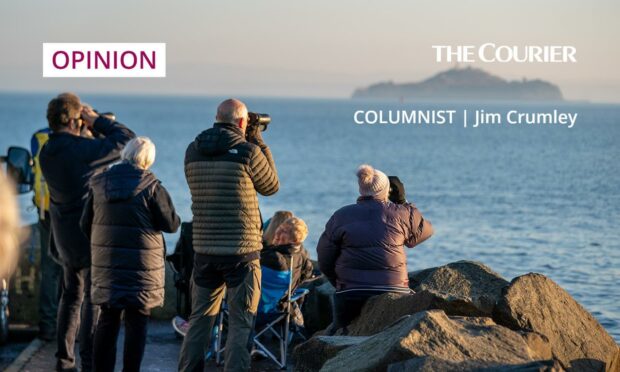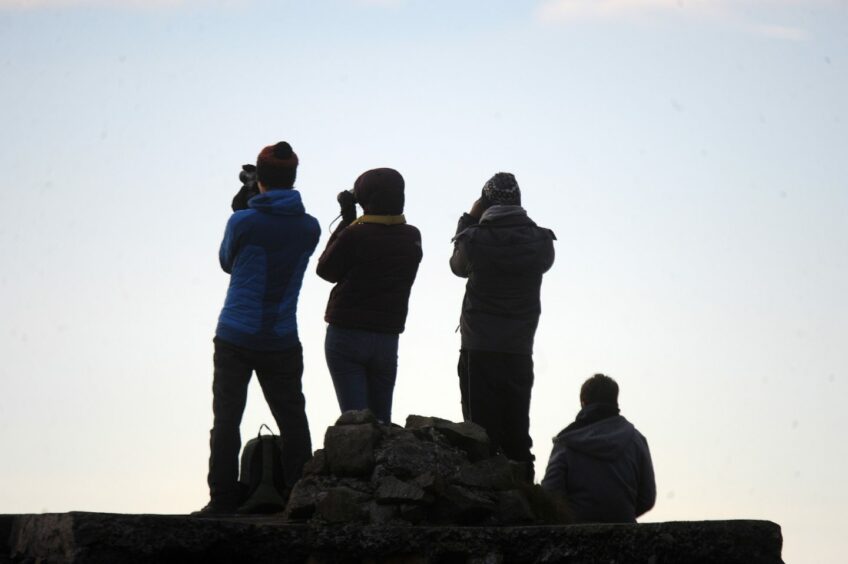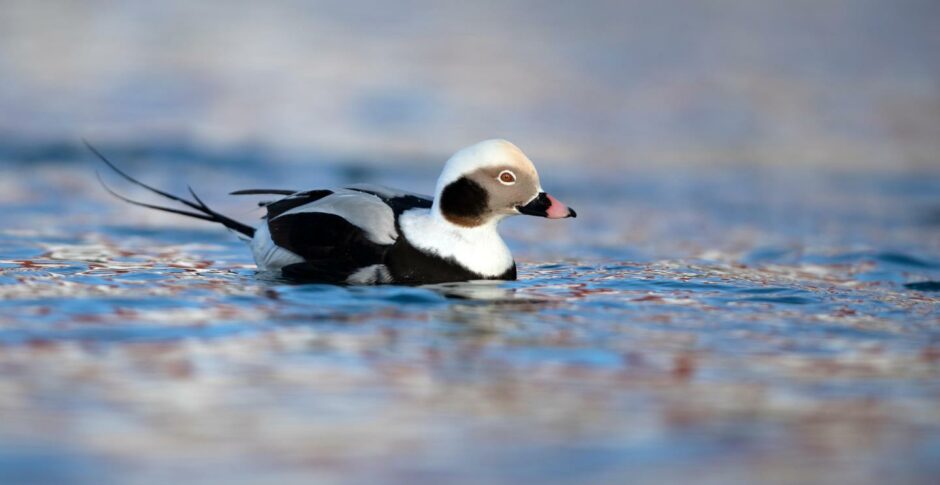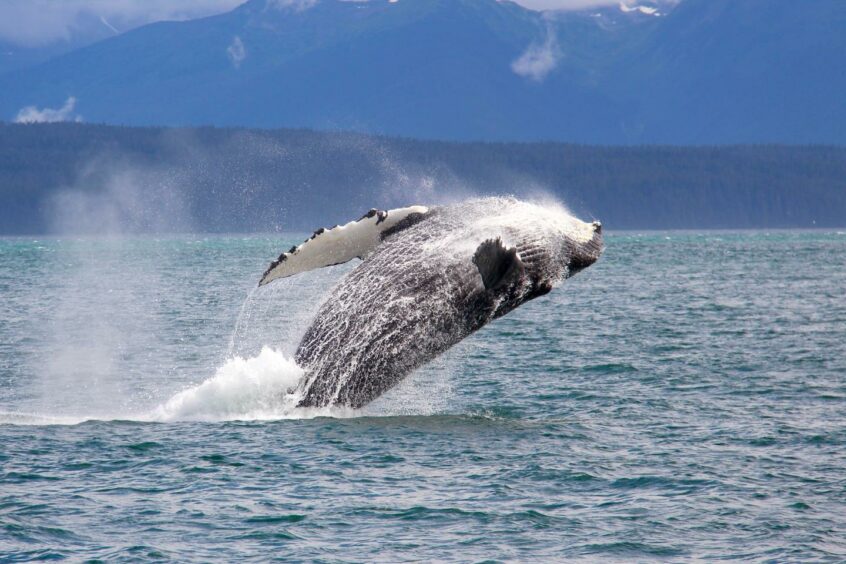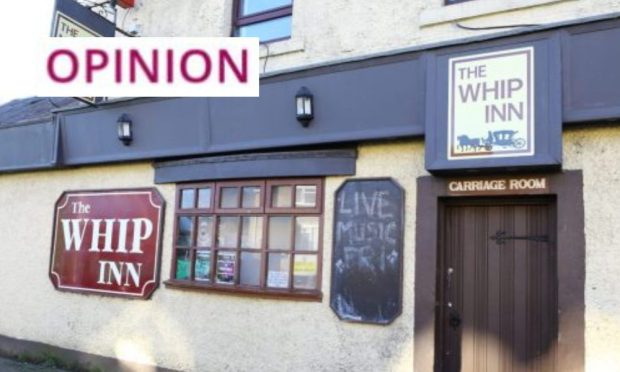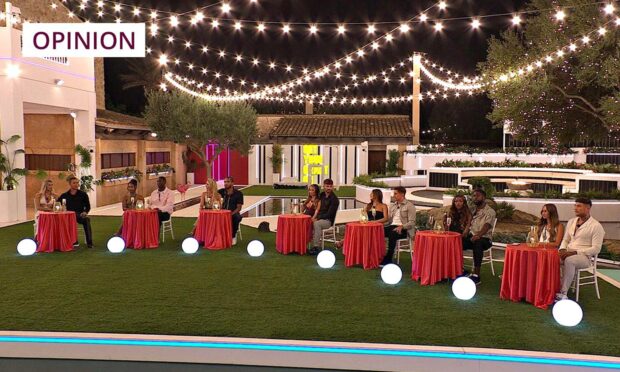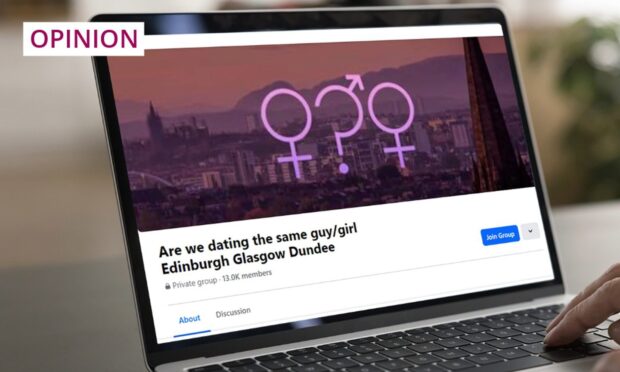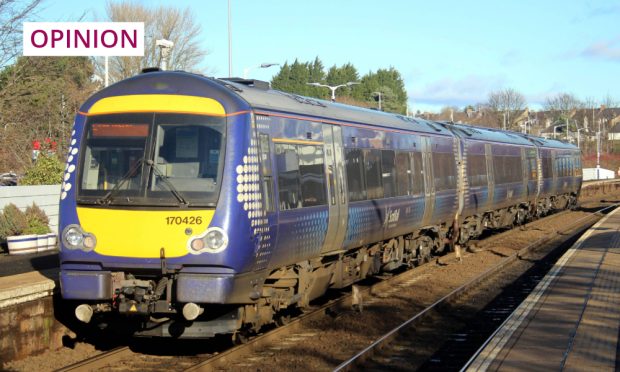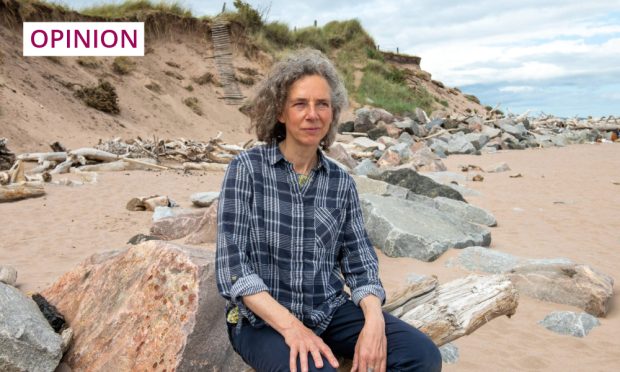Kinghorn on the Fife coast on a December afternoon. It takes a certain stoicism to sit still on a low brick wall for more than two hours and stare at the sea.
A good insulating mat helps. So does a good flask of hot tea, shortbread, that kind of thing.
My companion, Leo du Feu, Burntisland-based landscape and wildlife painter, brought Christmas cake.
We were whale-watching.
Somewhere out there, between Kinghorn in Fife and the Bass Rock about 30 miles away, there was a humpback whale.
One or two turn up most years in January. This one was early.
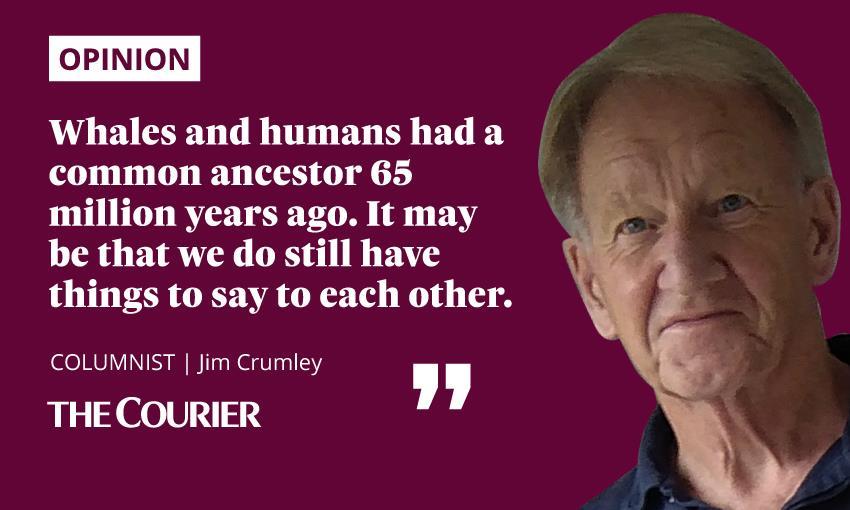
When you settle and study that expanse of firth and open sea, it looks a forlorn hope.
But there is a whale-watching network your phone can tap into for news of latest sightings, and the willingness to share is somehow touching.
Given my long habituation to solitary fieldwork, this was rocket science technology made suddenly relevant by whales.
It seemed to me to be a singularly good use for it.
We talked too much at first, exchanged pleasantries and information with the handful of others who were there for the same reason, then found our own watching spot and permitted the necessary stillness to unfurl.
Time stalled.
Then the first blow.
Voices called out. Not loud, but louder: “Just left of the green buoy…”
The sharing thing again.
So you drew a bead on the green buoy and hunted left from there with the binoculars.
This is why you pay over the top for good binoculars, to bring distant whales close.
On the surface, a dark curve that looked black, and at the top of the curve a small, backward-leaning pointed curve, the dorsal fin of a humpback whale.
Then nothing.
Incredible photos of a humpback whale in the Forth today taken from Kinghorn by Allan Brown. Wow! pic.twitter.com/0JXjtpX0G9
— Kingdom FM (@kingdomfm) March 6, 2017
It had begun again.
And my addiction to whales – and humpbacks in particular – had laid claim to me again.
Fife humpback whale rekindled a love born in Alaska
Over the next two hours the whale showed again and again and came closer and closer to our shore.
And between sightings there were long-tailed ducks for entertainment, sleek black and white and grey birds from north of the Arctic Circle which while away their winters around our coasts.
The male with his exotically long black tail looks more Amazonian than Arctic.
The whale blew again, materialised as a long black log and just lay there on the surface.
And the moment I started willing it to lift a pectoral fin (anything up to 15 feet long on a humpback) and “wave”, it dived, and the sublimely sculpted wedge of the tail folded in last and we all said things like “ah” or “nice” or “beautiful” or “perfect”.
I wonder at moments like that if a whale picks up any of the admiring vibes and compliments (for water is such an efficient conveyor of sound over distance).
And if it does, does it recognise them as belonging to the same tribe that terrorised them for centuries with harpoons?
I first came close to humpbacks in Alaska in 1998, which is when the addiction bit deep.
A small whale-watching boat in Glacier Bay was eventually more or less surrounded by seven or eight humpbacks.
The nearest of them nosed right alongside and when I leaned over the rail, its four-inch wide eyeball passed by about six feet away, making blatant eye contact.
That’s how close I came to humpbacks.
The skipper cut the engine and lowered a hydrophone into the sea so that we could listen to their voices.
I thought of Duke Ellington jazz and wondered: “What are you trying to tell me?”
Whales and humans – closer than we realise?
The best whale book I know is Among Whales by Roger Payne. He wrote:
“Whales and humans seem to have an interesting kind of bond – call it a bond of mutual curiosity – which appears to form automatically and surprisingly often when whales and people find themselves face to face.
“This bond also seems to occur when people hear the songs of whales for the first time.
“It is as though our two mammalian brains have more in common than we are aware and that we really may have significant things to say to each other…if only we could find a communication channel…”
It is a sublime thought.
Twenty-three years after the event, I have never stopped grappling with the certainty I felt that a humpback whale in Alaska was reaching out to me when it came alongside, looking up.
And Roger Payne wrote:
“…Meanwhile, we are signaling to each other with every gesture, every sound, every hint of what may someday qualify as meaningful communication but for which meanings are not yet known.”
Whales and humans had a common ancestor 65million years ago. It may be that we do still have things to say to each other.
“I believe in God but I spell it Nature,” said Frank Lloyd Wright.
Watching a humpback whale off the Fife coast a week before Christmas, I know exactly what he meant.
Meanwhile, enjoy your Christmas, and as Dave Allen used to say, may your God go with you.
